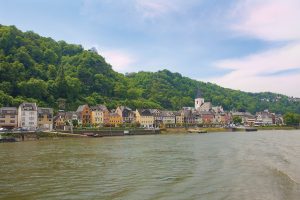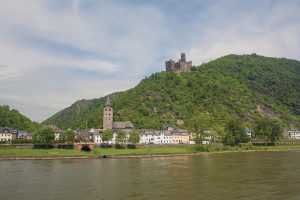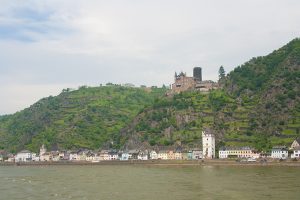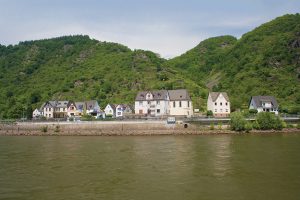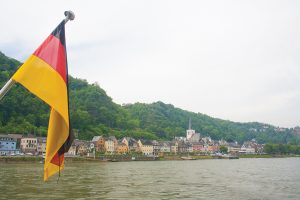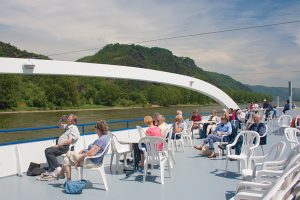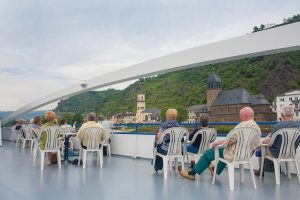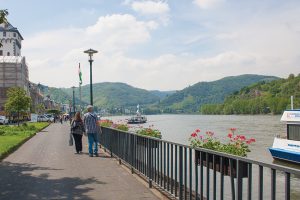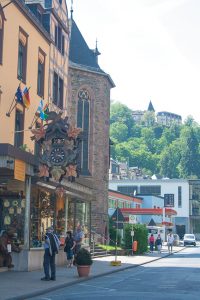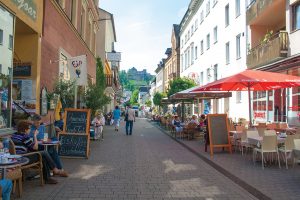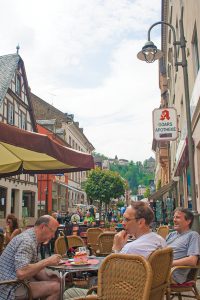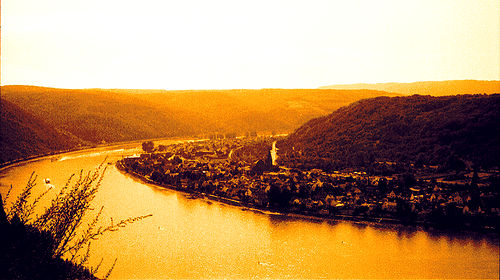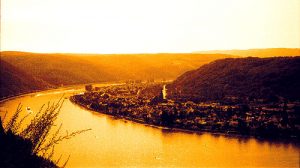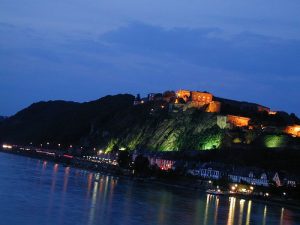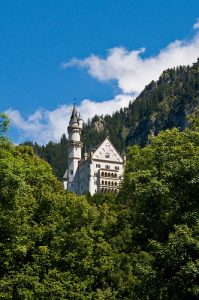I’d been to the winemaking town of Rüdesheim (Rüdesheim am Rhein, to give it its proper name) before in late autumn and at Christmas, so I was looking forward to seeing the town I’d loved so much on my last visit, this time, in the summer sun.
Arriving in style
As we pulled into the coach park, there was a colourful little ‘Noddy train’ waiting for us, which would take us right into Rüdesheim’s centre. Snaking through the narrow streets, we rattled along in our little carriages as people stood against the walls to let us pass, some of them giving us a friendly wave and a smile as we went by.
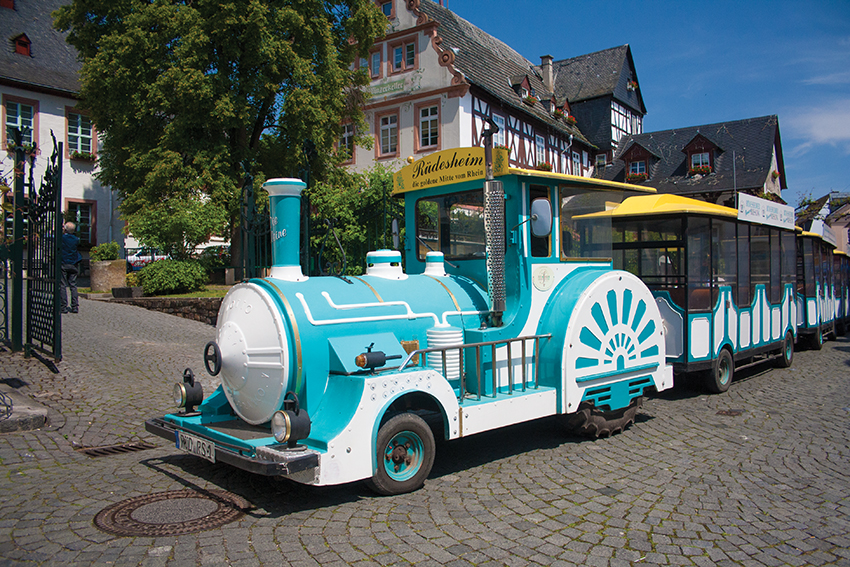
Music to our ears
Our first stop was Siegfried’s Mechanical Music Museum, which is where our little train dropped us. Tucked in a small courtyard at the end of the main street, this lovely old building houses a strange and wonderful collection of – yes, you’ve guessed it – mechanical musical instruments. Our guide, dressed in period costume, welcomed us in and showed us around the place, demonstrating the self-playing instruments as she went and telling us all about the history and construction of them.

I was surprised at just how big the place was: little rooms appeared left and right and along small corridors, all full of weird and wonderful machines: small music boxes; ornate music cabinets; violins; pianos; organs; huge metal discs which played various tunes; and an old gramophone playing an old record of Doris Day singing ‘Que Sera’, which a few people had a bit of a sing along to. There was one large machine which had little figures all playing their own instrument, and another which played violins using a round bow! Amazing!
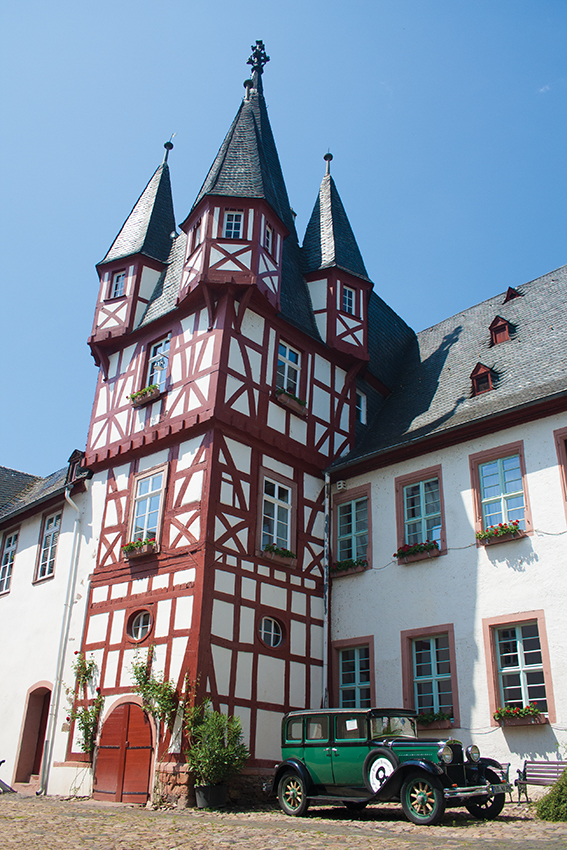
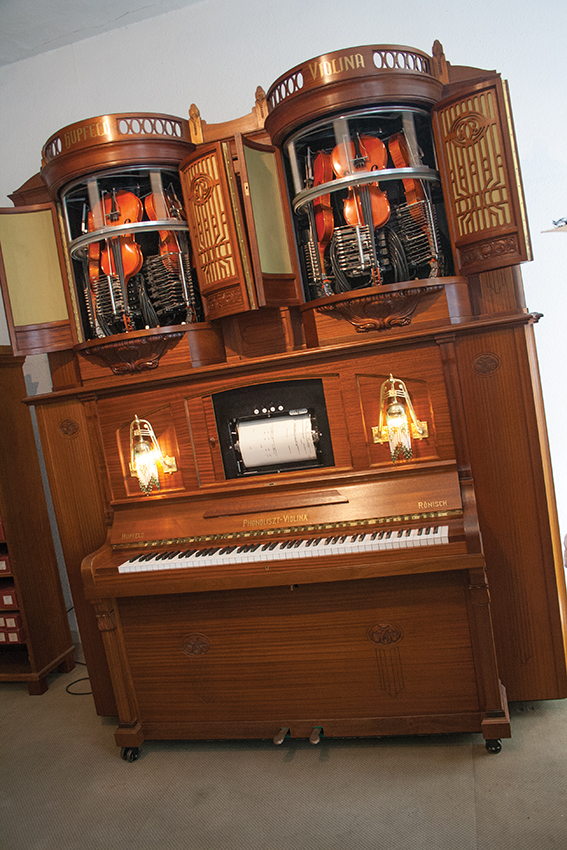
The place to be
Back out in the warm sunshine, I headed to the Drosselgasse. Not far from Siegfried’s, this narrow, world-famous street is always busy and links the main street, Oberstrasse, to the riverside. Full of souvenir shops, wonderful restaurants, wine houses (of course – this town has a long history of wine growers and is situated amongst vineyards), beer gardens and live band entertainment, this is one place that’s great to visit at any time of day or night, even if it’s just to enjoy a walk along it.

Time for coffee: Rüdesheim style!
Back up on Oberstrasse the cafés were full of people enjoying the weather, and, judging by their cups and saucers, a ‘Rüdesheim coffee’ – the local speciality, made with plenty of brandy and topped with whipped cream. I was looking for the cable car to take me up to the Niederwald Monument, perched high on the hillside above the town. I found the station at the side of the Christmas shop, and, as I’d already decided to walk back down to the town as it was such a nice day, I got a one-way ticket (€4.50) and climbed aboard.
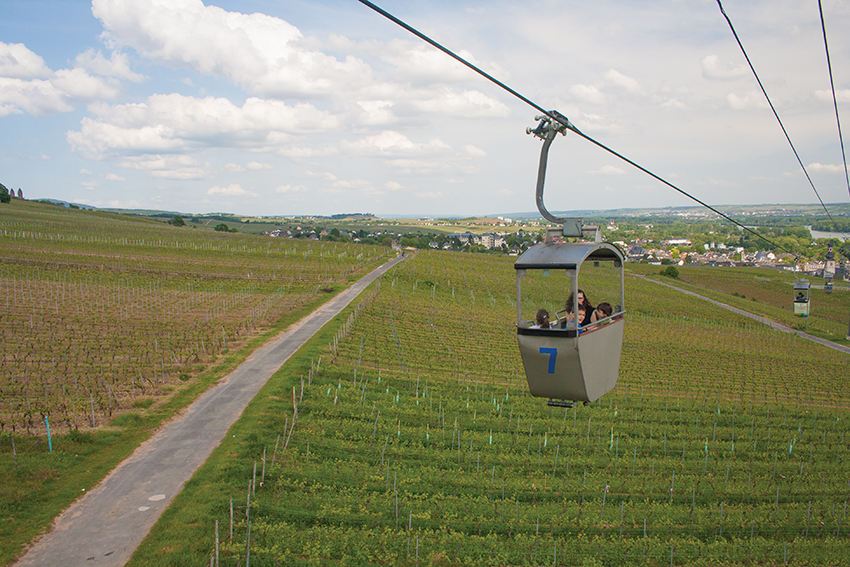
Above the vineyards
It was so peaceful, sailing over the top of the vineyards. The views from the cable car were fantastic: the path zig-zagging its way through the grapevines; over to the town of Rüdesheim; and across the River Rhine to Bingen. Ten minutes later, I was at the top where it was just a short walk over to the Niederwald Monument – the Niederwalddenkmal – the large figure of Germania which, unfortunately at the time of my visit, was covered in scaffolding as it was undergoing some restoration. The panoramic view from up there was just as wonderful, and there were benches and telescopes up there to have a rest and enjoy the views. (Just a quick note: you need 2 x 50c or 1 x Euro coin for the telescope.)

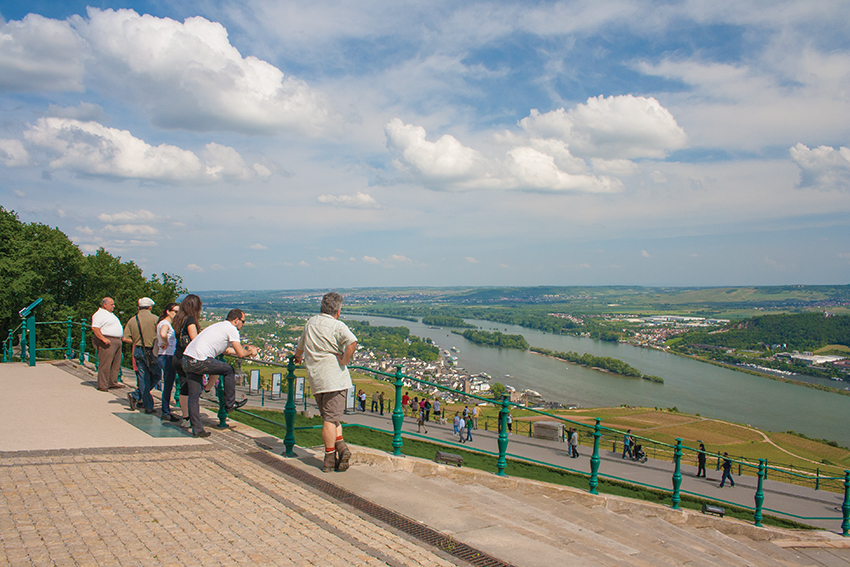
Heading back down to Rüdesheim, the walk was lovely. There was a warm breeze, the birds were singing and the grass was blowing in the gentle wind. Except for the birds, all I could hear was my footsteps on the ground. I followed the signs – sometimes along tarmac paths, sometimes stones, and in some places, a few steep steps – through the vineyards and back to town.

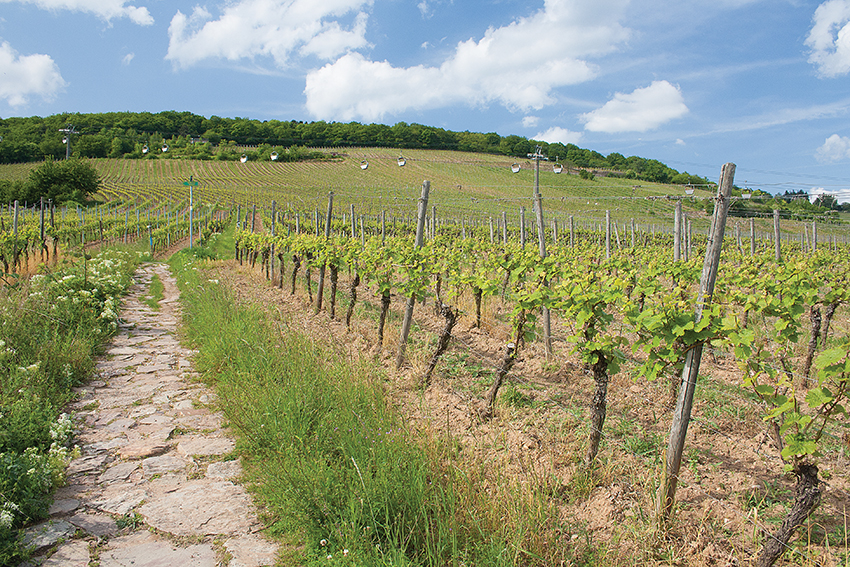

Back in the town, the little bars had filled up and there was a buzz about the place as I made my way back to the coach. So that was it. My taste of ‘summertime Rüdesheim’ had been just as good as my autumn and Christmas experiences. I’ll have to try springtime next time!

I visited Rüdesheim on Leger’s Romantic Rhine, Fairytale Castles and the Black Forest tour.



